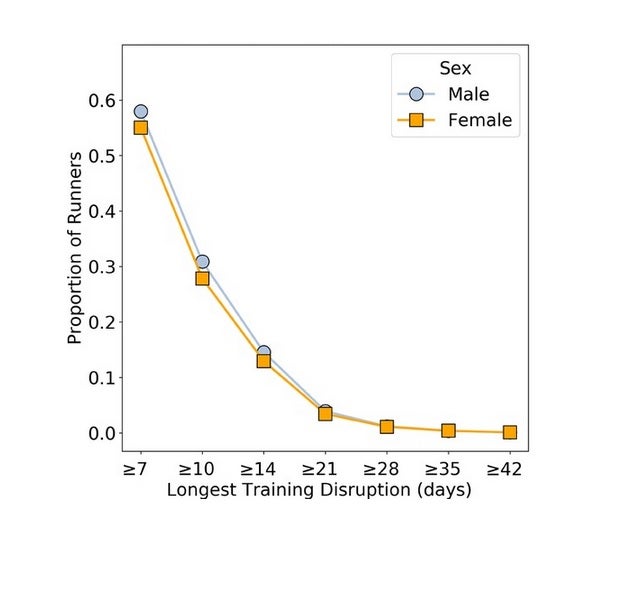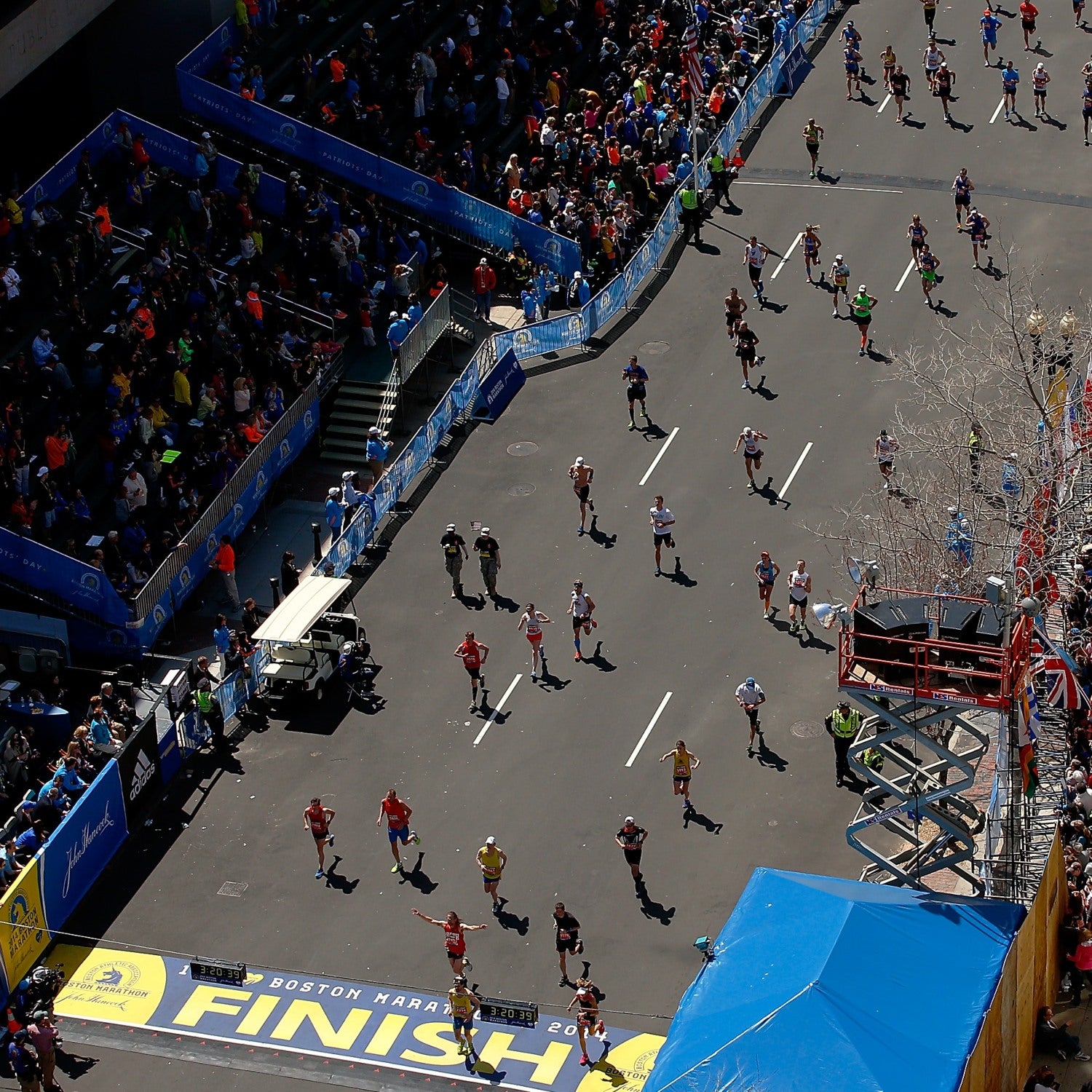Last fall, I decided to run a cross-country season for the first time in a few years. I started hammering a weekly over-hill-and-dale interval session with friends, and partway through one of these workouts—stop me if you’ve heard this one before, fellow middle-aged people—I felt a faint pop in my right hamstring. It didn’t feel terrible, but I’m a cautious guy. After a few seconds of denial, I stopped running and headed home.
The next morning is when the hard decisions started. I could feel the tweak in my hamstring, but was still capable of running if I wanted to. My target race was just over five weeks away. How should I weigh the risk of making the hamstring worse—perhaps bad enough to end my season entirely—with the loss of fitness that would begin to accumulate if I took time off? I’ve been running long enough to know that a few days off isn’t the end of the world, but I didn’t have a precise sense of how much fitness I’d lose with each passing day, which made weighing the pros and cons difficult.
There are a few different ways you can approach this. One is to model your individual training responses over time in order to come up with personalized parameters describing how quickly your body accumulates fitness and fatigue. That’s the “performance engineering” method suggested by coaches such as . At the opposite end of the spectrum, you can mine big datasets for general insights about what happens to people like you when they involuntarily miss some training. That’s what a team at University College Dublin, led by doctoral student Ciara Feely, does in .
Feely and her colleagues used a massive set of training data uploaded to Strava by nearly 300,000 marathoners between 2014 and 2017. (I wrote about another analysis of Strava data led by Barry Smyth, one of the co-authors of the new paper, in 2020. That one used training and racing data to estimate critical speed.) Within the dataset, Feely’s team identified 43,933 runners who had completed a marathon after missing at least seven consecutive days of training sometime during the 12 weeks prior to the race and completed another marathon with no training disruptions. The question: how much slower, if at all, did they run when their training was disrupted?
The first thing to note is that training gaps were extremely common among the runners in the study. Among the full dataset of nearly 300,000, more than half had at least one gap of at least seven days during their 12-week marathon build-up, and nearly a third had a ten-day gap. Here’s the proportion of runners (on the vertical axis) as a function of their longest pre-marathon training disruption (on the horizontal axis):

There are still some runners—somewhere between 10 and 15 percent of them—who straggle up to the start line of their marathon despite missing two continuous weeks of training, which is… impressive, in a way. Or, alternately, it might be a sign that the data isn’t perfect. All the researchers have is the raw Strava data. They don’t know why these training gaps appear: maybe it’s a pulled hammy, maybe it’s a misplaced charging cable for the GPS watch.
Even if the data is perfect, it’s also worth noting who we’re talking about. The average runner in the study was about 40 years old, running 25 miles a week in three runs. The men (233,000 of them) had average marathon times of just under four hours, while the women (59,000) averaged 4:24. In the taxonomy of athlete status, this population straddles the border between recreationally active and trained runners. You don’t expect Eliud Kipchoge to show up if he misses two weeks of his marathon build-up. Whether he’d suffer more or less than the average runner from the effects of missed training isn’t obvious, but either way you can’t assume the results would scale to runners like him.
With those limitations in mind, here’s the bottom line: runners who missed a 7- to 13-day stint of training during their 12-week build-up ran 4.25 percent slower than when they had an uninterrupted build-up. If the gap was two weeks, they slowed by a little more than 6 percent. At three weeks, it was about 7.5 percent. At four weeks—come on, let’s be serious here.
You can slice and dice the data to get some further insights. Men seemed to be significantly more affected than women by missed training, a finding the researchers suggest may result from the fact that men tend to overestimate their fitness and hit the wall more frequently, even when their training has gone well. Younger runners also suffer more, as do sub-four-hour marathoners. You can come up with various stories to explain these results based on training patterns or psychological differences or whatever—but without data to tell us which story is true, there’s not much point in speculating.
One pattern that does seem notable, or at least logical, is that missed training between eight and 12 weeks before race day has less effect than if it happens between three and seven weeks before the race. (The researchers didn’t analyze missed training in the last three weeks, since that might be part of a taper.)
In the end, the guidance you get here isn’t going to be as fine-tuned as a personalized “performance engineering” calculation. The upside is that you’ve got a number right here, or at least a range of numbers, that can help you adjust your race goals if you do hit a speedbump on the road to your next marathon. As for my hamstring, I took two days off and a few more days easy and made it through the rest of the season—until the 6K mark of my season-ending 8K race, when it blew again. It was mild enough that I made it to the finish without slowing much, so I’d call that a perfectly judged injury response.
For more Sweat Science, join me on and , sign up for the , and check out my book .


